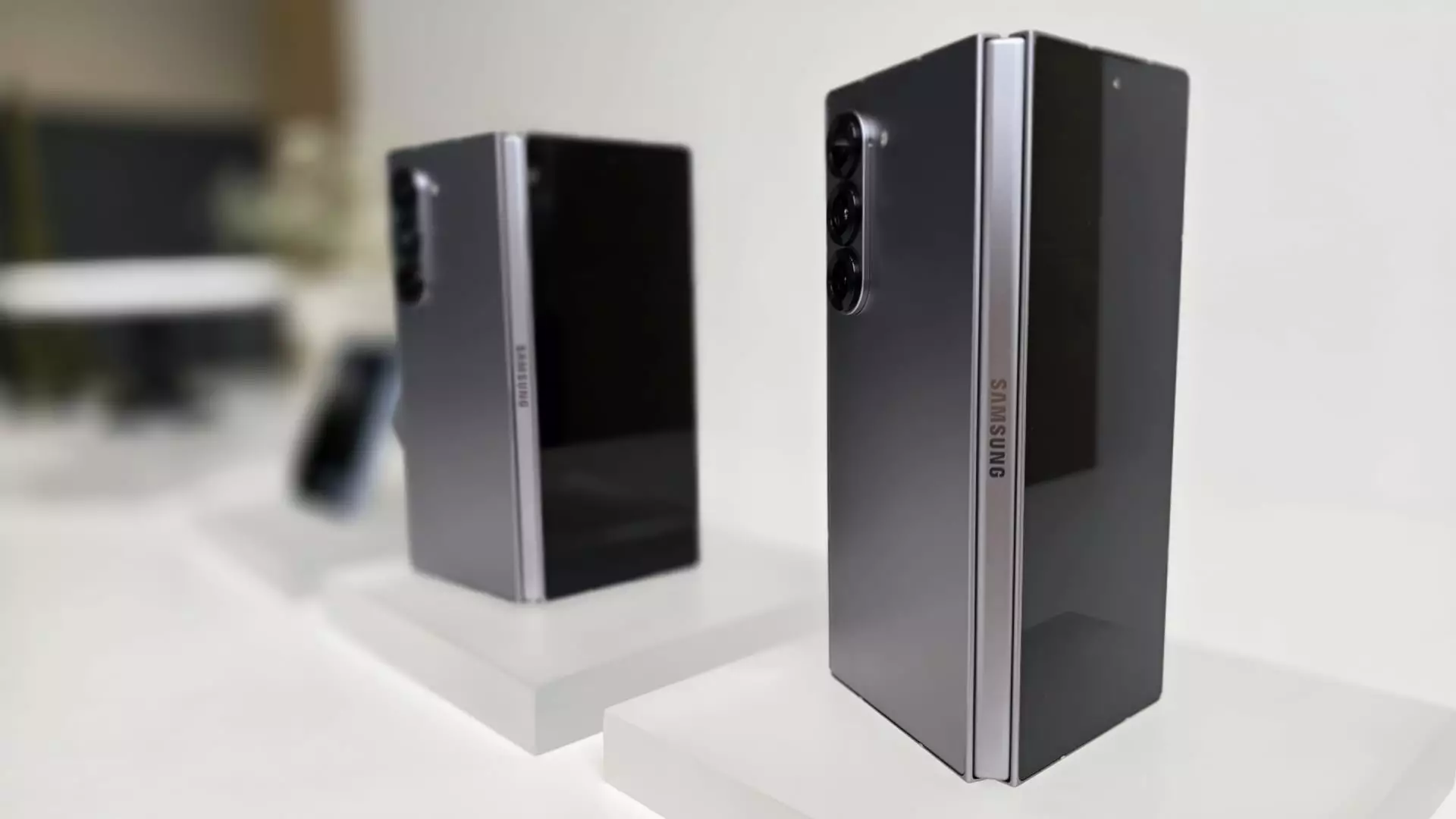The smartphone industry is witnessing a fierce competition, particularly in the realm of foldable devices, where innovation and design play crucial roles. As Samsung prepares to unveil a slimmer version of its flagship foldable smartphone, it signifies not just a technological advancement but a strategic necessity to counter the rising pressure from formidable Chinese competitors like Honor and Oppo. The advanced design of foldable smartphones allows them to gain traction among consumers, but it is the quest for thinner and lighter models that truly sets the stage for market dominance. The anticipation surrounding Samsung’s upcoming launch highlights the urgency for established brands to adapt to evolving consumer expectations.
The Slimness Factor: Why It Matters
As smartphone users become increasingly discerning, the importance of device thickness cannot be overstated. Renowned analysts have pointed out that the aesthetic and functional appeal of foldable phones hinges on their ability to mimic the sleekness of conventional smartphones. Ben Wood, chief analyst at CCS Insight, emphasizes that consumers are unwilling to accept heftier devices, even when the screen real estate is significantly expanded. The crucial takeaway is that consumers’ tolerance for bulkiness is diminishing; they seek a balance of functionality and convenience. This trend illuminates a challenge for brands: the need for innovation in not only performance but also the physical design of their products.
The Competitive Landscape: A Closer Look
While Samsung’s last foldable phone, the Galaxy Z Fold6, boasts impressive specifications, it remains comparatively thicker and heavier than its primary rivals. For example, Oppo’s Find N5 and Honor’s Magic V3 have successfully capitalized on slimmer designs, establishing a differentiation that has the potential to sway consumer preference. The statistics are telling; the Galaxy Z Fold6 measures 12.1 millimeters thick when folded, while the two competitors sit comfortably at approximately 8.9 and 9.2 millimeters, respectively. This difference, while seemingly marginal, significantly impacts user experience and satisfaction, highlighting that every millimeter counts in the consumer’s eyes.
Responding to Consumer Hesitations
Despite impressive advancements, the foldable segment has proven less popular than many industry experts anticipated. Analysts predict that foldable devices will only represent about 2% of the overall smartphone market this year. The seeming reluctance for adoption can be attributed to consumers’ ongoing skepticism regarding the necessity of a folding device. In a market saturated with efficiently designed monoblock smartphones, the challenge remains to convey a compelling reason for users to transition to foldable models. The introduction of slimmer devices may indeed create an opportunity to reignite interest and drive consumer curiosity, but it also necessitates a shift in mindset about mobility and the role of technology in everyday life.
Future-Proofing: The Role of Apple
Adding further complexity to the foldable market’s dynamics is the looming presence of Apple, a company that has notably abstained from entering this segment. Yet, analyst Ming-Chi Kuo’s recent announcement regarding Apple’s plans to debut a folding iPhone next year could dramatically reshape market perceptions. Apple’s entry is likely to set new industry standards, spurring competitors to enhance their offerings continually. If Apple successfully merges its acclaimed design ethos with revolutionary foldable technology, other brands will face the urgent need to elevate their products or risk obsolescence.
The Road Ahead: Consolidating Innovation and Consumer Needs
As Samsung prepares for its upcoming launch, the stakes are higher than ever. The race is not simply about producing the slimmest device but about redefining consumer expectations around foldable phones. The company’s ability to craft a device that marries aesthetics with utility could not only enhance its market position but potentially rejuvenate consumer interest in foldable technology overall. The landscape is shifting, and brands must remain agile, continuously innovating while being attuned to the nuanced demands of the market. In this complex battleground of technological prowess and consumer sentiment, only those who can amalgamate compelling design with practical functionality will succeed.

